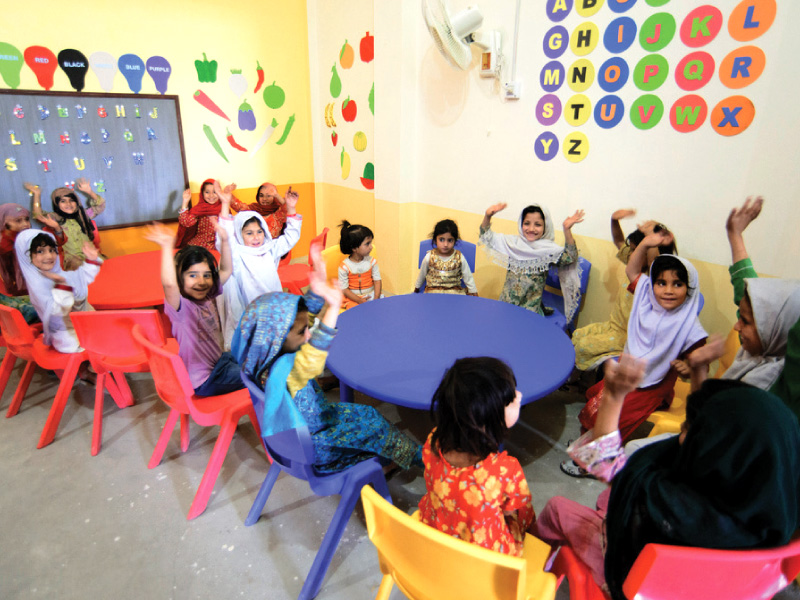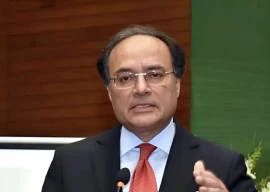
She does not know her own age and accepts being illiterate as her fate. Gul Jaan* hardly earns enough money to buy even bare necessities, but dreams of getting her eight year old son, Zakariya, educated. This widowed woman believes that educating Zakariya will get them a better future and will pull them out of darkness.
“My husband was a security guard. He died five years ago from a heart attack,” she started explaining while talking to The Express Tribune. “At that time, Zakariya was only 3 years old.” Today, she lives with her sister, brother-in-law and their three children in their house.
According to Article 25 A in the 18th Constitutional Amendment Act 2010, the state shall provide free and compulsory education to all children between ages five and sixteen in such a manner as may be determined by law. But under-privileged parents like Gul Jaan do not know this right, neither do they get it.
Originally hailing from Parachinar, Gul Jaan stitches clothes to earn a living. Her son attends school and also goes for tuition. Furthermore, a lady comes to their house to teach Zakariya how to recite the Holy Quran. “On a monthly basis, his school fee is Rs800, the tuition teacher charges Rs500, whereas the Quran tutor is paid Rs300,” shared Gul Jaan.
Gul Jaan has no idea about what her son is being taught. “It is enough for me to know that Zakariya is learning something and becoming literate. I wish to see him go to university.”
Like many parents, here every hope of a comfortable future for her family is hinged on the dream to see her son educated. But the state of Pakistan’s educational standards for the non-elite remains dismal.
According to the United Nations Educational, Scientific and Cultural Organization’s (UNESCO) 11th Education for All Global Monitoring report, fewer than half of the children in Pakistan are learning the basics whether they have been to school or not. It is one of only four countries outside of sub-Saharan Africa where this is the case.
The report further mentions that this crisis will last for generations, leaving the disadvantaged far behind, unless tackled urgently. In Pakistan, rich boys and girls are expected to complete primary school by 2020, but on recent trends poor boys will reach this fundamental target only in the late 2050s and poor girls just before the end of the century.
Explaining what this means, Manos Antoninis, Acting Director of the EFA Global Monitoring Report, says, “Our Report shows that fewer than half of children in Pakistan are learning the basics in reading, whether they have been to school or not. This means that they will be unable to interpret the meaning of a short and simple text. Children who do not reach this minimum learning standard, do not read well enough to learn other subjects.”
Speaking of Pakistan as a whole, less than 30% of the kids are learning the basics in reading.
Of hope and disparity
“We should see that a lot has also been done in the education sector. Some provinces are doing really well, whereas some of them need more attention,” says a hopeful Dr Ishrat Husain, Dean and Director of the Institute of Business Administration. In Dr Husain’s opinion, Punjab is doing a good job in the education sector and they are improving their education system, and KP is also doing a lot to improve the system of education in that province. He feels that more focus is needed on Sindh’s and Balochistan’s system of education. “In Balochistan, female literacy is the lowest so a lot of improvement is needed there.”
In Sindh, less than a fifth of the poorest girls can do basic calculations compared to over half of the richest boys. In Balochistan, only 45% of all children of grade 5 (whether in school or not) can solve a two-digit subtraction, while in the wealthier province of Punjab, 73% can do so. One reason for the difference is the chance of a child getting into school and staying until grade 5. In Balochistan, 53% reach grade 5 and 69% in Punjab.
Schooling being considerably better in Punjab could be a reason for this disparity. Of those in grade 5, 84% know how to subtract two-digit numbers, compared with 71% in Balochistan.
Way forward
In the opinion of Antoninis, “for real change for children in Pakistan, the government must increase the amount of its budget it is dedicating to education. The level of spending on education in the country is still one of the lowest levels of any country in the world and has declined since 1999.”
Antoninis further elaborated that there are wide inequalities in learning outcomes between rich and poor, girls and boys and different provinces. “If the government is to help the vast numbers of children who are not learning anything at all, it must provide incentives for good teachers to work in remote and rural areas to serve the children suffering the most from the learning crisis.”
*Names changed to protect privacy
Published in The Express Tribune, February 16th, 2014.



1719211536-0/BeFunky-collage-(81)1719211536-0-165x106.webp)



















COMMENTS
Comments are moderated and generally will be posted if they are on-topic and not abusive.
For more information, please see our Comments FAQ